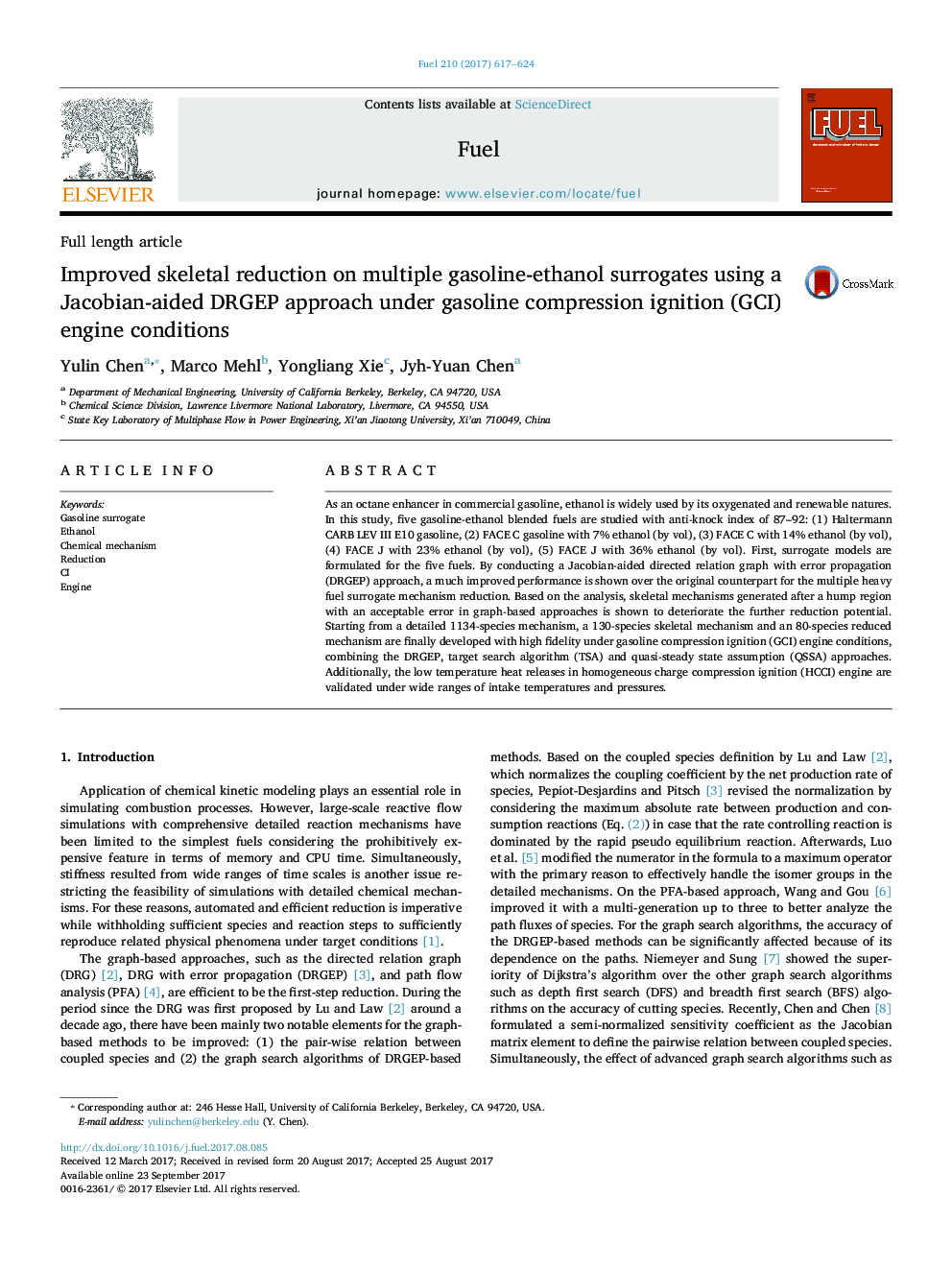| Article ID | Journal | Published Year | Pages | File Type |
|---|---|---|---|---|
| 4768357 | Fuel | 2017 | 8 Pages |
Abstract
As an octane enhancer in commercial gasoline, ethanol is widely used by its oxygenated and renewable natures. In this study, five gasoline-ethanol blended fuels are studied with anti-knock index of 87-92: (1) Haltermann CARB LEV III E10 gasoline, (2) FACE C gasoline with 7% ethanol (by vol), (3) FACE C with 14% ethanol (by vol), (4) FACE J with 23% ethanol (by vol), (5) FACE J with 36% ethanol (by vol). First, surrogate models are formulated for the five fuels. By conducting a Jacobian-aided directed relation graph with error propagation (DRGEP) approach, a much improved performance is shown over the original counterpart for the multiple heavy fuel surrogate mechanism reduction. Based on the analysis, skeletal mechanisms generated after a hump region with an acceptable error in graph-based approaches is shown to deteriorate the further reduction potential. Starting from a detailed 1134-species mechanism, a 130-species skeletal mechanism and an 80-species reduced mechanism are finally developed with high fidelity under gasoline compression ignition (GCI) engine conditions, combining the DRGEP, target search algorithm (TSA) and quasi-steady state assumption (QSSA) approaches. Additionally, the low temperature heat releases in homogeneous charge compression ignition (HCCI) engine are validated under wide ranges of intake temperatures and pressures.
Related Topics
Physical Sciences and Engineering
Chemical Engineering
Chemical Engineering (General)
Authors
Yulin Chen, Marco Mehl, Yongliang Xie, Jyh-Yuan Chen,
